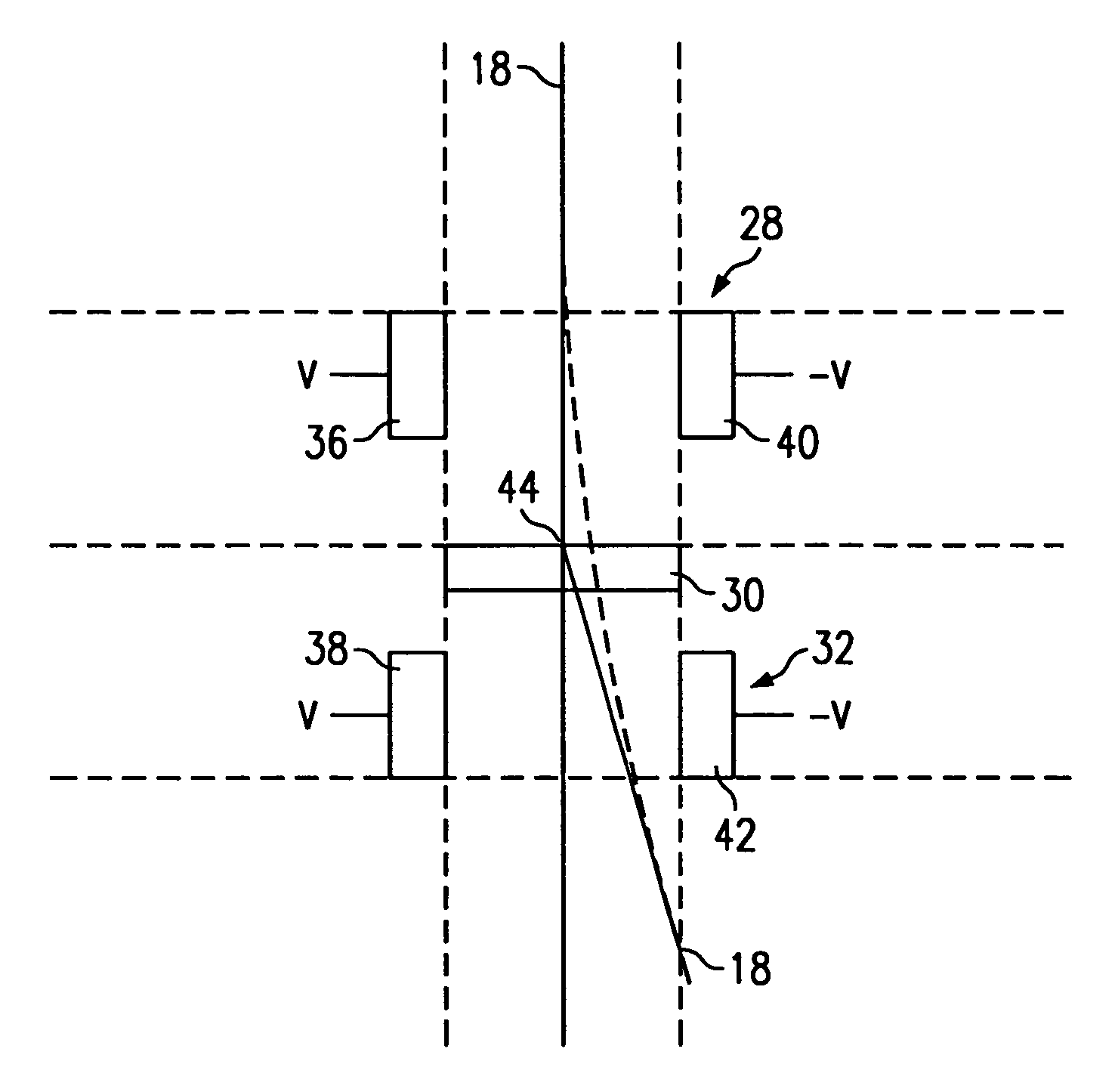Method and system for calibrating the scan amplitude of an electron beam lithography instrument
a technology scan amplitude, which is applied in the field of electron beam lithography methods and systems, can solve the problems of deleterious increase of line width, time constraints become even more critical in direct pattern generation, and other significant problems, etc., to reduce or substantially reduce deflection axis crosstalk, gain differences and scan offsets, and resist video noise.
- Summary
- Abstract
- Description
- Claims
- Application Information
AI Technical Summary
Benefits of technology
Problems solved by technology
Method used
Image
Examples
Embodiment Construction
[0030]Preferred embodiments of the present invention are illustrated in the FIGUREs like numerals being used to refer to like and corresponding parts of the various drawings.
[0031]For general understanding of the invention, it is helpful to see the relationship for the blanker to the other elements of an electron beam lithography column. To that end, FIG. 1 shows a side cut-away schematic view of electron beam lithography system 10 incorporating the teachings of the present invention. Electrons are provided in the column by a cathode which is a thermal field emission electron source 16 much as described in U.S. Pat. No. 3,374,386 entitled FIELD EMISSION CATHODE HAVING TUNGSTEN MILLER INDICES 100 PLAIN COATED WITH ZIRCONIUM, HAFNIUM OR MAGNESIUM ON OXYGEN BINDERS, issued to Charbonnier, et al., in 1968. FIG. 1 shows only half of the column cross-section on the left-hand side of dash line 12. On the right-hand side of dash line 12 appears the electron beam divergence and convergence p...
PUM
 Login to View More
Login to View More Abstract
Description
Claims
Application Information
 Login to View More
Login to View More - R&D
- Intellectual Property
- Life Sciences
- Materials
- Tech Scout
- Unparalleled Data Quality
- Higher Quality Content
- 60% Fewer Hallucinations
Browse by: Latest US Patents, China's latest patents, Technical Efficacy Thesaurus, Application Domain, Technology Topic, Popular Technical Reports.
© 2025 PatSnap. All rights reserved.Legal|Privacy policy|Modern Slavery Act Transparency Statement|Sitemap|About US| Contact US: help@patsnap.com



